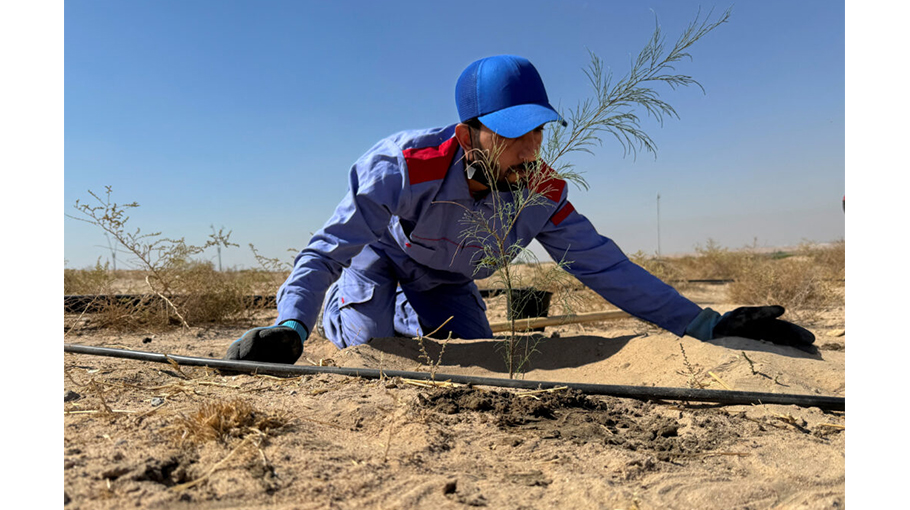Adapting together to climate change in developing nations

Takayoshi Kato
The impact of climate change on developing countries is profound. By altering and intensifying disaster risk patterns, it exacerbates existing challenges such as poverty, inequality, poor health, insufficient infrastructure and geopolitical instability faced by those countries. This combination of factors threatens their ability to meet their sustainable development goals. Climate adaptation efforts must promote social inclusiveness and should be supported by granular risk identification for the most vulnerable segments of society.
One key to effective climate change adaptation in developing nations is allowing local actors to take the lead. Climate risks are highly context-specific and efforts must be driven by those who understand the local dynamics best — local stakeholders. National governments must support them by designing and implementing regulatory frameworks, promoting information exchange and capacity development, as well as allocating necessary financial resources. The Philippines’ National Climate Change Action Plan 2011–2028 and National Disaster Risk Reduction and Management Plan 2011–2028 both include a strong focus on integrating climate change adaptation and disaster risk reduction into regional and provincial development and land-use plans.
It is essential to measure and monitor climate risks at various territorial levels, including the community level. This ensures vulnerability assessments are conducted on a more granular scale, leading to more effective responses to local disparities. Emerging initiatives reflect this approach. In Central Asia, water basin councils and emergency and hydrometeorological institutions collaborate to manage climate risks at the basin level, while Ghana has conducted an assessment of climate risks at the sub-national level.
Implementing locally led, place-based strategies to strengthen climate resilience, including in urban areas, requires extensive stakeholder engagement. But this process can be time-consuming and resource intensive. Some stakeholders may hesitate to participate due to the time commitment or because they feel that their voices were not adequately considered in previous policy processes following consultations.
Non-state actors, such as civil society organisations and the private sector, can bridge this gap. Civil society organisations often have better access to remote areas and communities most vulnerable to poverty and climate risks. Meanwhile, business associations can help local businesses access the technical support they need to enhance their climate resilience. This is exemplified by the Philippine Chamber of Commerce and Industry, which collaborates with the government to co-ordinate the MSME Resilience Core Group that promotes the resilience of Micro-, Small- and Medium-sized Enterprises in the country.
Strengthening legal and institutional frameworks for local climate adaptation is crucial, including by clarifying roles and improving coordination across levels of government. Even in richer countries, integrating the role of local authorities into national climate strategies remains limited. Only one-third of OECD member countries mention the role of local authorities in measuring and evaluating adaptation progress in their National Adaptation Plans and National Adaptation Strategies.
Yet good practice examples already exist. Poland’s National Urban Policy 2030 emphasises climate goals at urban, rural and regional levels. And France’s ‘eco-district’ program supports neighbourhood-scale projects that promote resilience while addressing broader social and economic objectives such as employment and safety.
Enhancing funding mechanisms is vital to provide the financial support that cities and regions need. Green budgeting and procurement practices can help sub-national governments align their resources with climate objectives. Bangladesh’s Ministry of Local Government, Rural Development and Co-Operatives has implemented the ‘Local Government Initiative on Climate Change’. This initiative provides nine districts with support in, among other things, developing the capacity to undertake risk-informed, locally-led adaptation planning and budgeting.
The ‘Disaster Response Capability Mapping’ initiative in the Philippines integrates climate risk consideration into local investment planning. And Peru’s National Disaster Risk Management System law requires regional and local governments to integrate disaster risk management into their planning and budgeting processes.
The importance of climate resilience affects both human and natural systems. The role of Nature-based Solutions (NbS) — actions to address societal challenges by protecting, sustainably managing and restoring ecosystems — in enhancing the climate resilience of these systems is increasingly recognised, as is the role of local authorities in involving communities in planning and implementing NbS. Indonesia’s ‘Building with Nature’ initiative is restoring mangrove forests in coastal communities, such as Timbulsloko village. These mangroves serve as natural barriers, providing protection against shoreline erosion and flooding. The project is crucial in safeguarding around 70,000 people living in high-risk coastal areas.
At the same time, there are also challenges to ensure successful NbS. Another study of eight mangrove planting sites in Indonesia found that about 79 per cent of them were unsuccessful. These initiatives face issues such as a lack of proper land preparation, regular maintenance and monitoring, as well as a low level of mangrove seed survival rates.
The Asia Pacific region is marked by its cultural, economic and environmental diversity, which shapes the varying levels of vulnerability to climate risks across different countries. A common challenge throughout the region is that the poorest and most marginalised communities bear the brunt of climate change.
Initiatives to enhance climate resilience must ensure that progress for one group does not come at the expense of another, prioritise the needs of the most vulnerable and distribute the benefits of climate resilience equitably across all communities. Building inclusive, resilient communities and cities capable of withstanding the impacts of climate change is not just an economic necessity for developing nations — it is a matter of justice and fairness.
Takayoshi Kato is Environmental Economist at the OECD
Source: East Asia Forum




